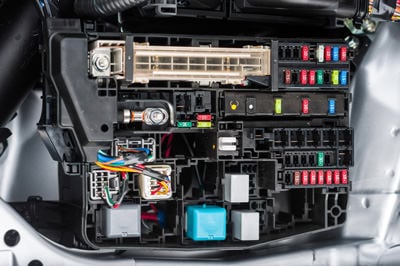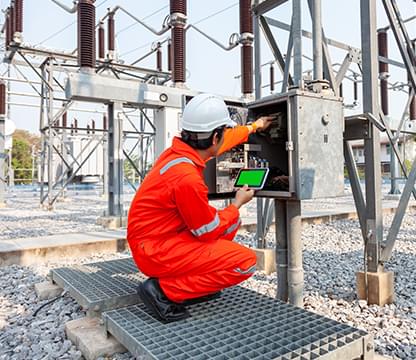Advanced electrical system troubleshooting for seamless operations.
Advanced electrical system troubleshooting for seamless operations.
Blog Article
Top Tips for Effective Electrical System Troubleshooting
Troubleshooting electric systems needs a systematic technique, grounded in a comprehensive understanding of electric concepts and safety methods. By acquainting oneself with circuit components, making use of vital tools, and adhering to an organized examination method, experts can effectively recognize and fix concerns. Nevertheless, the nuances of efficient troubleshooting prolong beyond plain technical expertise; understanding just how to document searchings for and prioritize security can significantly affect end results. As we discover these essential elements further, it ends up being clear that grasping this procedure is not simply helpful but important for success in the field.
Understand the Essentials
Recognizing the essentials of electric systems is crucial for reliable troubleshooting, as a strong foundation allows specialists to identify and deal with concerns extra efficiently. A comprehensive understanding of electrical principles, such as voltage, current, resistance, and power, is essential in identifying the root creates of issues. Voltage is the electrical potential difference that drives present via a circuit, while resistance opposes the flow of present, impacting the total performance of the system.
Familiarity with circuit parts, including resistors, capacitors, diodes, and switches, is additionally critical. Each part plays an unique duty in circuit habits and can influence performance when malfunctioning. In addition, comprehending collection and parallel circuit arrangements is important, as these setups influence the circulation of voltage and current within the system.
Professionals need to be mindful of potential dangers, such as shock and short circuits, to execute safe troubleshooting methods. By mastering these fundamental ideas, service technicians enhance their capacity to conduct effective diagnostics and repair work, eventually leading to enhanced efficiency and dependability of electric systems (electrical system troubleshooting).
Gather Necessary Equipment
Reliable troubleshooting of electric systems needs the ideal collection of devices to identify and settle concerns properly. A well-equipped technician can considerably enhance efficiency and effectiveness in identifying troubles. Essential devices consist of a multimeter, which determines voltage, present, and resistance, enabling for accurate assessments of electrical parts. Secure meters are additionally useful for determining existing without detaching the circuit, making sure security and benefit.
Additionally, shielded hand tools such as screwdrivers, pliers, and cord pole dancers are essential for securely controling electrical links. It is likewise advisable to have a circuit tester accessible to confirm the existence of voltage in outlets and wires. For even more complex systems, a thermal imaging electronic camera can aid discover overheating components, suggesting potential failings.

Comply With an Organized Strategy
Having actually collected the appropriate tools, the next action in troubleshooting electrical systems is to comply with a methodical technique. A systematic approach makes certain that technicians can identify faults effectively and precisely, lessening downtime and protecting against unneeded repairs.
Begin by examining the system's schematic representations and specs. Comprehending the style and operational specifications will certainly provide context for diagnosing issues. Next, isolate the problem location by making use of helpful resources a procedure of removal. This entails checking each component systematically, starting from the power source and functioning in the direction of the lots.
Use testing devices, such as multimeters and oscilloscopes, to collect unbiased information concerning voltage, current, and resistance at different factors within the system. This empirical evidence will lead your troubleshooting efforts and help to validate or get rid of possible reasons of failure.
In addition, think about ecological aspects that may affect the system's performance, such as temperature level changes or dampness ingress. An extensive inspection of electrical wiring, connections, and elements will certainly make sure that all possibilities are made up.
Document Your Searchings For
Extensive documentation is essential in the fixing process of electric systems. Precise documents boost the performance my latest blog post of identifying repeating problems and promote interaction among group members. Each searching for ought to be thoroughly noted, including signs observed, tests carried out, and the results of those examinations. electrical system troubleshooting. This technique not just aids in comprehending the source of the issue but additionally offers as a referral for future fixing initiatives.

Furthermore, maintaining a log of components changed or repair services done is vital. This info supports inventory management and can aid examine the durability and reliability of specific parts.
Eventually, the paperwork process need to be detailed yet succinct, enabling easy access and review - electrical system troubleshooting. By focusing on in-depth documentation, technicians can develop a beneficial data base that not just help in current troubleshooting but additionally encourages future upkeep efforts, thereby boosting general system reliability

Prioritize Precaution
Recognizing the integral risks related to electrical systems is critical for guaranteeing safety and security during troubleshooting. Electric shock, burns, and equipment damage are simply a few of the potential threats that specialists encounter. Prioritizing precaution is not just a legal responsibility yet also an ethical important that safeguards both the professional and the surrounding atmosphere.
Before beginning any kind of troubleshooting task, service technicians should put on appropriate personal protective tools (PPE), including protected handwear covers, shatterproof glass, and flame-resistant garments. Ensuring that the workplace is dry and devoid of mess can considerably minimize the threat of accidents. Moreover, it is important to de-energize circuits before beginning any work, confirming that they are not endure making use of a multimeter or voltage tester.
Establishing clear communication procedures with staff member is likewise crucial; this makes sure that every person is aware of potential risks and the condition of the electrical system being worked with. Lastly, having an emergency response plan in position can confirm important in the event of an incident. By focusing on precaution, professionals can effectively mitigate threats and foster a more secure office.
Final Thought
Efficient electric system troubleshooting counts on a comprehensive other understanding of essential concepts and a methodical technique. Focusing on safety procedures ensures the wellness of people involved and the stability of the electric system.
Report this page